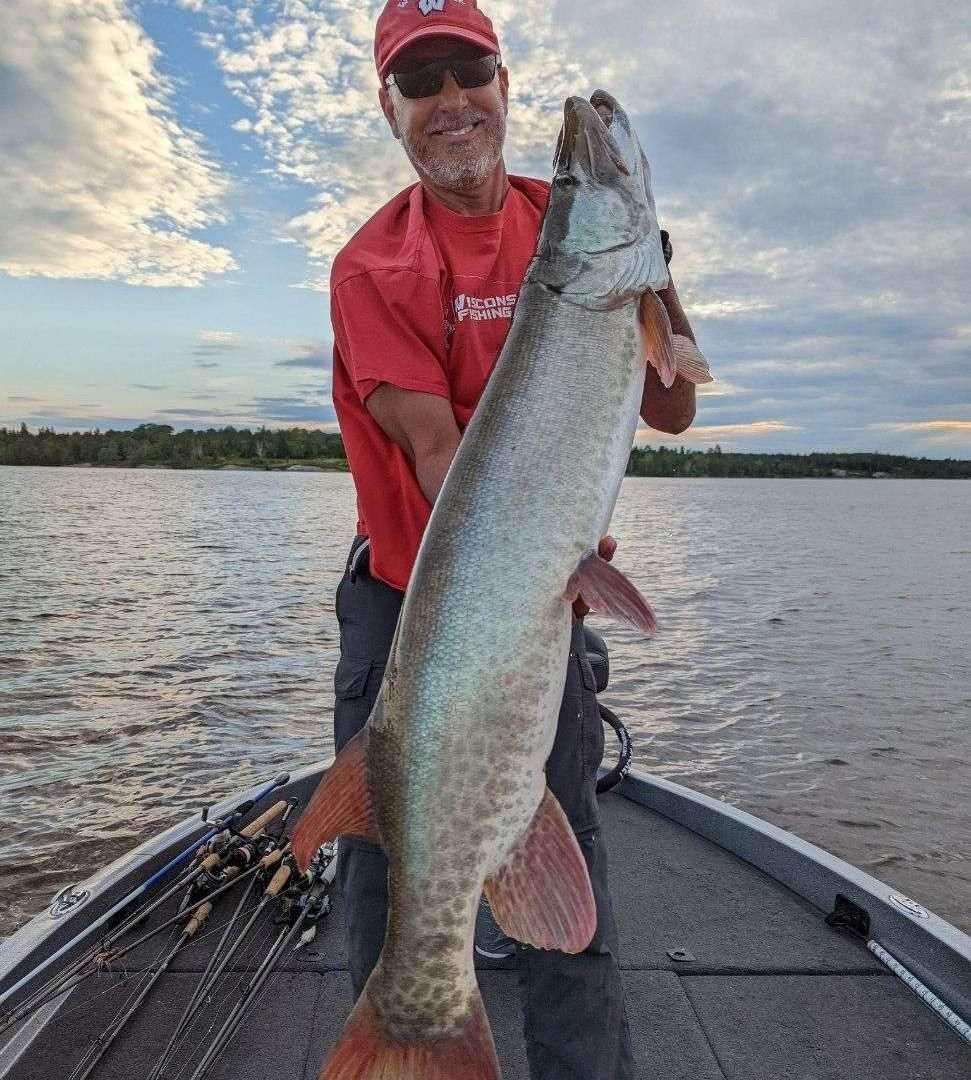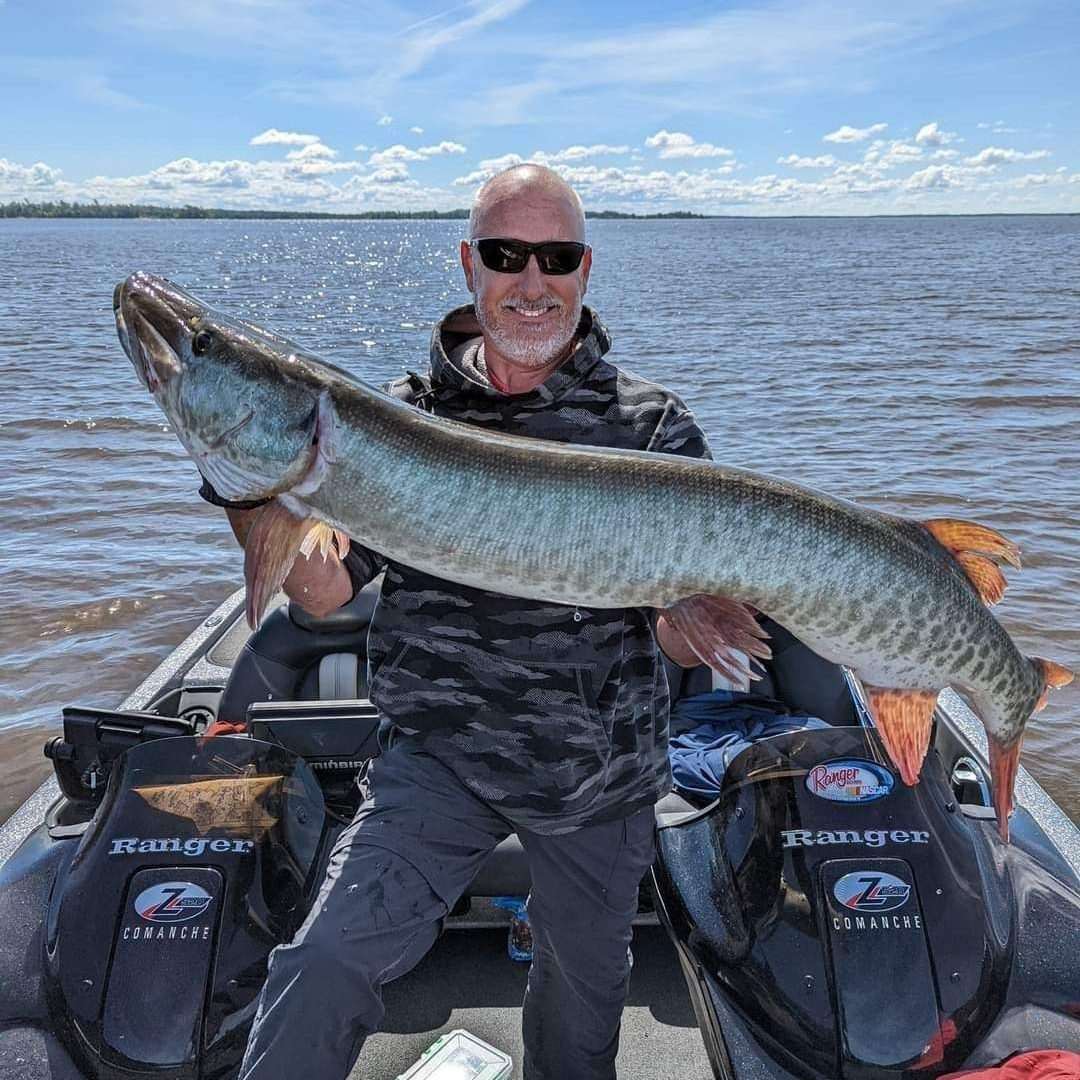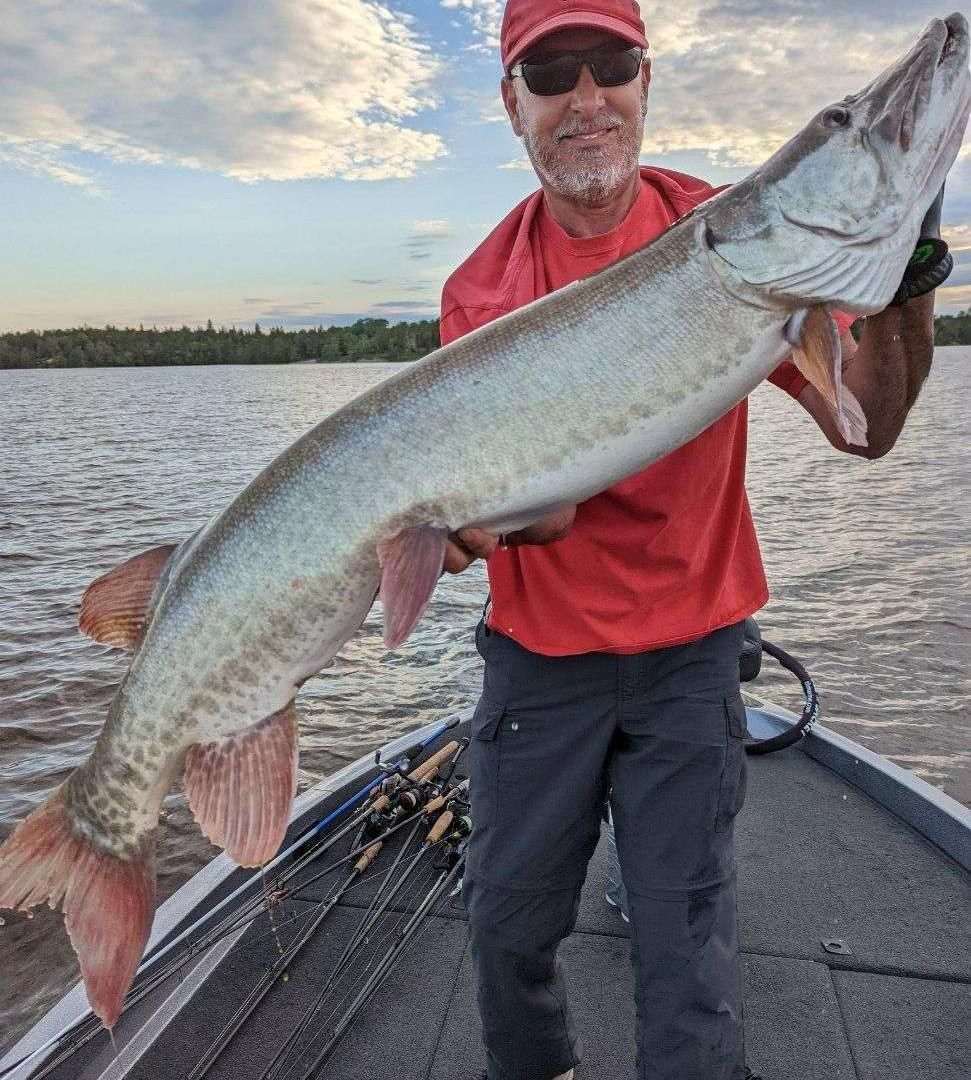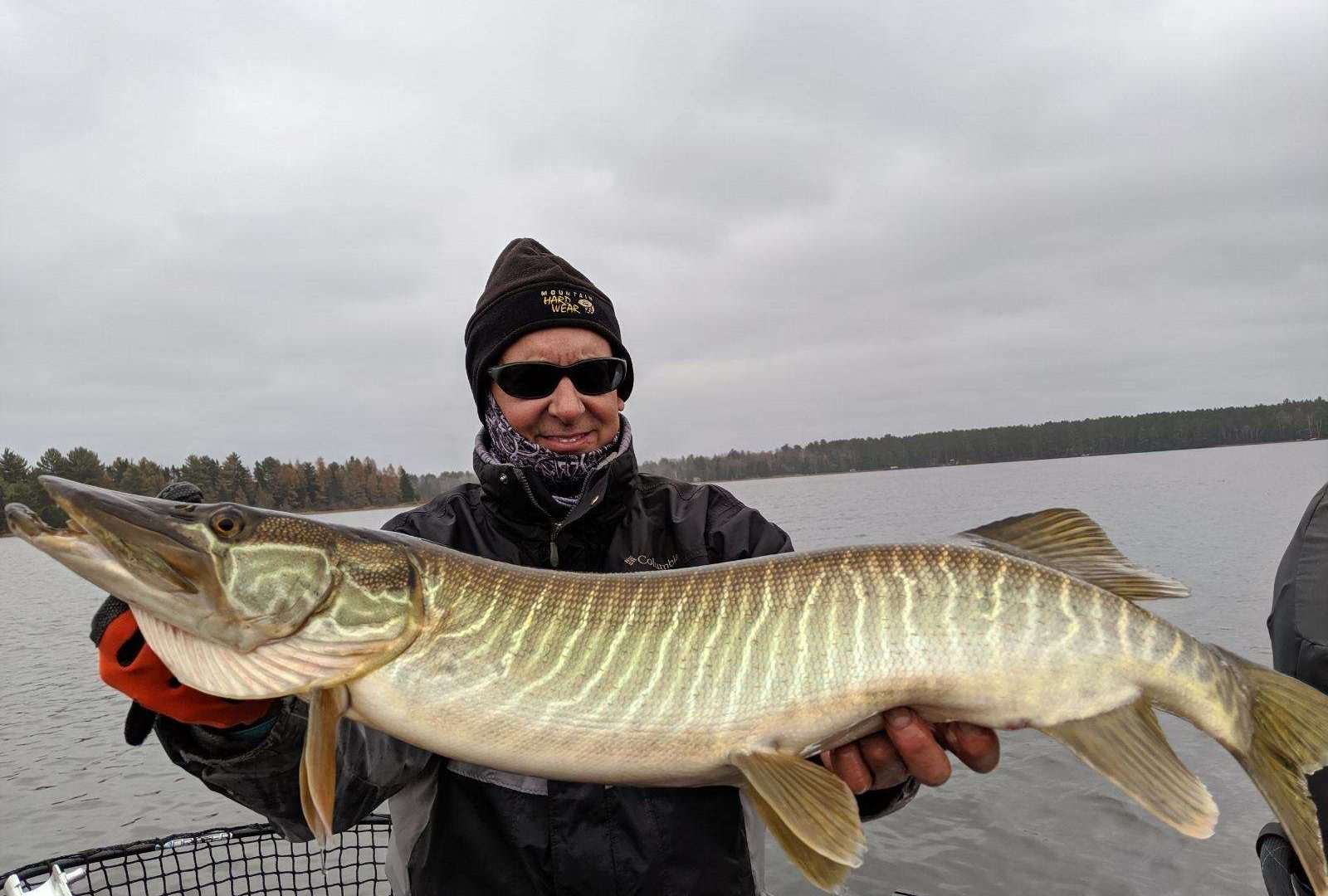Muskie
Scientific Name: Esox masquinongy
Toxicity Level
About The Fish
The muskellunge (Esox masquinongy) is a large freshwater fish belonging to the pike family (Esocidae). It is known for its aggressive nature and powerful strikes, making it a challenging and exciting fish to pursue. The muskellunge, muskie, musky, ski, or lunge are common names. There are four types of muskellunge fish-barred muskies, spotted muskie, tiger muskellunge, and clear muskies. The Great Lakes Muskellunge is native to the Great Lakes Basin. The muskellunge can be found in all three drainage basins in Wisconsin and Michigan (Lake Michigan, Mississippi River, and Lake Superior). Muskies are often called the "fish of 10,000 casts" due to their elusive nature and the patience required to catch them.
Muskellunge is the largest member of the pike family and is highly sought after by anglers due to its aggressive nature and challenging fight. They are known for their long, torpedo-shaped bodies, sharp teeth, and distinctive markings.
In the northern regions of Wisconsin and the Upper Peninsula of Michigan, muskies are found in a variety of lakes, rivers, and reservoirs. These areas provide the ideal habitat for muskies, including clear and weedy waters with ample cover like fallen trees, weed beds, and rock structures. Some popular musky waters in the region include the Chippewa Flowage, Lake Vermilion, Eagle River Chain, and the Cisco Chain of Lakes.
Anglers targeting muskellunge often use heavy-duty equipment, including sturdy rods and reels with high line capacities. Large lures such as jerkbaits, bucktails, crankbaits, and topwater plugs are commonly used to entice muskies. Due to their aggressive nature, muskellunge are known for their thrilling strikes and acrobatic jumps when hooked.
Fishing for Muskellunge, often referred to as muskie, in the Upper Peninsula of Michigan can be an exciting and rewarding experience. The Upper Peninsula (UP) is known for its pristine lakes, rivers, and vast wilderness, providing excellent habitat for this elusive and predatory fish species. Here's some information to help you better understand muskie fishing in the UP:
Muskellunge are known for their impressive size and strength. They can grow to be quite large, with lengths exceeding 50 inches and weights over 50 pounds. Musky fishing is predominantly catch-and-release, as these fish are considered trophy species and are important for maintaining healthy populations.
Habitat: The UP of Michigan offers a wide range of ideal muskie habitats, including large natural lakes, reservoirs, and rivers. Muskies are typically found in areas with abundant cover such as submerged vegetation, fallen trees, rocky structures, and deep pools. Some popular muskie fishing destinations in the UP include Lake Gogebic, Big Manistique Lake, and the St. Marys River.
Season: Muskie fishing in the UP is primarily a warm-weather activity, with the peak season running from late spring to early fall. The muskie season typically opens in late May or early June and closes in late November, but it's always a good idea to check the specific regulations for the waterbody you plan to fish.
Techniques: There are various techniques that anglers employ when fishing for muskie. Here are a few popular ones:
Casting: Casting with large muskie lures such as bucktails, crankbaits, and jerkbaits is a common technique. Anglers target areas with structure and cover, making long casts and retrieving the lure in a way that mimics the movement of prey.
Trolling: Trolling involves dragging lures behind a slow-moving boat. Large crankbaits, swimbaits, and spinnerbaits are commonly used for muskie trolling. This technique allows anglers to cover a larger area and locate actively feeding fish.
Live bait: Some anglers prefer using live bait, such as large suckers or chubs, to entice muskies. This technique requires a good understanding of the muskie's feeding behavior and the ability to present the bait effectively.
Fishing Regulations: It's important to familiarize yourself with the fishing regulations specific to the waters you plan to fish. Michigan has specific size and bag limits for muskellunge, which may vary from one waterbody to another. Additionally, you may need to obtain a fishing license, which can be purchased online or at local sporting goods stores.
Conservation: Muskellunge are a prized and relatively slow-growing species, so catch and release is encouraged to ensure the sustainability of the population. Proper handling techniques, such as using a large landing net and keeping the fish in the water as much as possible, can help minimize stress and increase survival rates upon release.
Health : Local waters have PCBs, dioxin, mercury, PFOS, and other chemicals that can be found in fish and stay in our environment for a very long time.
Be aware of the Michigan Department of Health and Human Services - The Eat Safe Fish Guide (ESF Guide)
Wisconsin has the a health guide for eating fish in Wisconsin - Choose Wisely Contaminate Advisories for Wisconsin
Fishing Season
Regulations:
Remember to consult local fishing regulations and guidelines before engaging in fishing activities, as rules may vary depending on which state you are fishing in, Wisconsin or Michigan both require their own fishing licenses. Watch for local posted regulations.
Season:
Northern Wisconsin - muskellunge May 27 – Nov. 30 (Season may vary each year)
Upper Peninsula of Michigan - muskellunge June 3- March 15 (Season may vary each year)
WI Fishing Hook & Line Record
Wisconsin Record muskellunge Musky.
Weight – 69 lbs. 11 oz. Length 63.5 Inches.
Date – 10/20/1949
Location Chippewa Flowage Sawyer County.
——————————————-
Wisconsin Record muskellunge TIGER Musky.
Weight – 51 lbs. 3 oz. Length 54 Inches.
Date – 07/16/1919
Location Lac Vieux Desert Vilas County.
MI Fishing Hook & Line Record
Michigan Record MUSKELLUNGE Great Lakes.
Weight – 58 lbs. Length 59 Inches.
Date – 2012
Type : Spin-casting Minnow
Location Lake Bellaire Antrim County.
Michigan Record MUSKELLUNGE Northern.
Weight – 49.75 lbs. Length 51 Inches.
Date – 2000
Type Bait-casting Crankbait
Location Thornapple Lake Barry County.
Michigan Hook and Line Records for Fishing
DNR Master Angler Michigan.gov Program and Map





